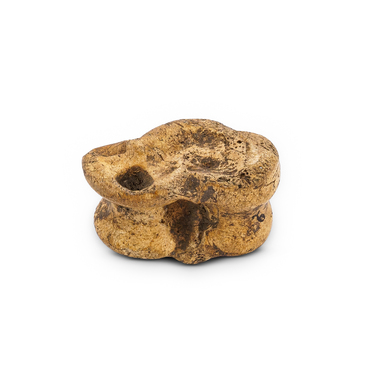Similar remains of cephalopod shells were used in ancient times for decorating drinking vessels. Specifically, the specimens on display belong to the order of belemnites (Belemnitida). It is believed that this group of cephalopods inhabited the seas during the Mesozoic era and became extinct approximately 66 million years ago.
Externally, belemnites resembled modern squids but differed in that they had a shell consisting of three parts: a middle part in the form of a cone known as the phragmocone; a thin, long protrusion in the back known as the proostracum; and a pointed end that held the phragmocone known as the rostrum.
As these mollusks evolved, the outer shell gradually became internalized, resembling a skeleton. Belemnites were predatory creatures and likely fed on smaller mollusks. They had large eyes capable of detecting faint light on the ocean floor, horny jaws, and ten appendages with which they could capture prey.
The tentacles of belemnite mollusks had strong, chitinous hooks. These hooks were usually small, measuring up to 5 millimeters in length, but some individuals had larger sickle-shaped hooks measuring between 3 and 8 centimeters. Scientists have established that the hooks did not grow along with the mollusk, but rather appeared in adult male specimens after they reached puberty. Researchers are still unsure of the precise purpose of these hooks, as they could serve both as a weapon and as a tool for better capturing prey during hunting.
The belemnite rostrum was stronger than other parts and is therefore better preserved. Paleontologists occasionally find clusters of these rostrums, which are often shaped like cones or cylinders and resemble the tips of spears or arrows. This distinctive shape is what gave the mollusks their name, derived from the ancient Greek word for throwing weapons — “belemnon”.
Fragments of ceramic
vessels made by prehistoric humans were decorated with various patterns.
Scientists have determined that in ancient times, people used fossils not only
as decorative elements, but also as tools for creating various designs. The
shape of the belemnite allowed them to create a pattern of indentations.



